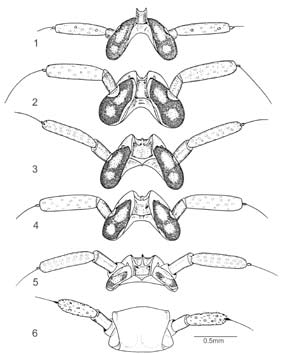Pattern and Process: Evolution of Troglomorphy in the Cave-Planthoppers of Australia and Hawai’i ‒ Preliminary Observations (Insecta: Hemiptera: Fulgoromorpha: Cixiidae)
DOI:
https://doi.org/10.3986/ac.v36i1.222Abstract
The evolution of troglobites comprises three distinct problems: cave colonization by an epigean ancestor, the evolution of troglomorphies, and intra-cave speciation. The study of cave-dwelling planthoppers has contributed much to our understanding of troglobite evolution and provides useful model systems to test various aspects of the theoretic framework developed in recent years. Most promising in this respect are taxa with several closely related but independently evolved troglobiontic lineages, such as on the Canary Islands, in Queensland/Australia and on the Hawaiian Archipelago. Closely related species often occur in caves with comparable ecological parameters yet differ in their age. Here we use comparative age estimates for Australian and Hawaiian cave cixiids to assess the dynamics of reductive evolutionary trends (evolution of troglomorphy) in these taxa and cave planthoppers in general. We show that the degree of troglomorphy is not correlated with the age of cave lineages. Morphological alteration may not be used to draw conclusions about the phylogenetic age of cave organisms, and hypotheses based on such assumptions should be tested in light of these findings.
Downloads

Downloads
Published
How to Cite
Issue
Section
License
Authors guarantee that the work is their own original creation and does not infringe any statutory or common-law copyright or any proprietary right of any third party. In case of claims by third parties, authors commit their self to defend the interests of the publisher, and shall cover any potential costs.
More in: Submission chapter




